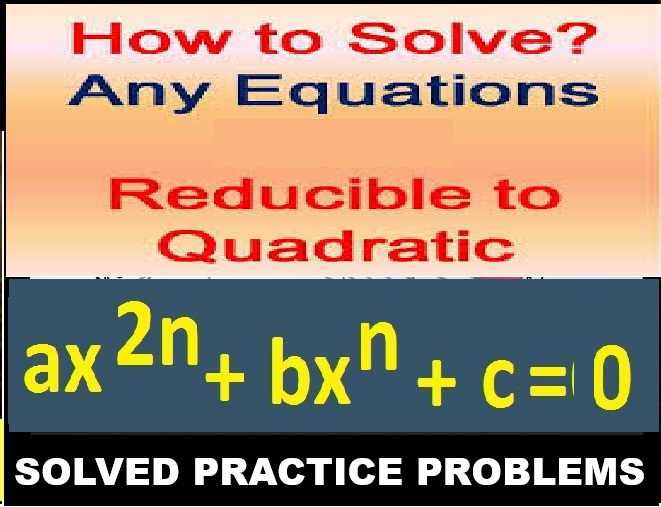The Cell Goyal Brother Solutions ICSE Class-9 Biology Ch-2. We Provide Solutions of Exercise-2 The Cell Goyal Brother Prakashan ICSE Class-9 Ch-2. The solution contain All Type exercise question such as name the following, odd one, MCQs and figure based .Visit official Website CISCE for detail information about ICSE Board Class-9.
The Cell Goyal Brother Solutions ICSE Class-9 Biology Ch-2
| Board | ICSE |
| Publications | Goyal Brother Prakashan |
| Subject | Biology |
| Class | 9th |
| Writer | Dr. S.K. Aggarwal |
| Chapter-2 | The Cell |
| Topics | Solutions of Exercises |
| Edition | for 2022-2023 Academic Session |
Ch-2 The Cell Goyal Brother Prakashan ICSE Class-9 Biology Solutions
(Page-20-21)
Questions 1. Name the following :
(i) Different cell organelles.—-
- Nucleus.
- Ribosomes.
- Endoplasmic reticulum.
- Golgi apparatus.
- Chloroplasts
- Mitochondria
(ii) Organelle associated with cellular digestion– lysosomes
(iii) Plastid containing coloured pigments- chromoplasts.
(iv) Infoldings of the inner membrane of mitochondria- cristae.
(v) Powerhouse’ of the cell.–Mitochondria
(vi) Kitchen’ of the cell. Chloroplast
(vii) Organelle called digestive bag-Lysosomes
(vii) Organelle with a double membrane found in plant cells only.–Chloroplasts
(ix) Two types of nucleic acids present in a cell.–deoxyribonucleic acid (DNA) and ribonucleic acid (RNA).
(x) Three types of plastids.
- Chloroplasts.
- Chromoplasts.
- Leucoplasts.
Questions 2. Name the chemical substance(s) found in the following:
(i) Cell wall—cellulose
(ii) Chromosome—made up of DNA tightly coiled many times around proteins called histones
(iii) Ribosome—proteins and RNA;
(iv) Plasma membrane—lipids (phospholipids and cholesterol), proteins, and carbohydrate groups
(v) Lysosome—hydrolytic enzymes (acid hydrolases)
Questions 3. Name the features possessed by :
(i) plant cells only—
Ans: The plant cell has a cell wall, chloroplasts, plastids, and a central vacuole—structures not found in animal cells.
(ii) both plant and animal cells.
Ans: cell membrane, cytoplasm and nucleus.
Questions 4. Give one example for each of the following:
(i) Smallest cell—Mycoplasma (PPLO-Pleuro pneumonia like organims)
(ii) Longest cell–The longest cell of the body is the neuron
(iii) Largest cell–The largest cells is an egg cell of ostrich
(iv) Irregularly shaped cell–irregular shaped cell include Amoeba
(v) Kidney-shaped cell–Guard cells
(vi) Elongated contractile cell–smooth muscle fibre and Paramoecium
Questions 5. Define the following:
(i) Cell: the smallest unit that can live on its own and that makes up all living organisms and the tissues of the body.
(ii) Cell organelles: Organelles are special and organized structures seen in living cells. Some of the membrane-bound organelles are vacuoles, nucleus, chloroplasts, lysosomes etc
(iii) Prokaryotic cell: Prokaryotic cells are unicellular organisms without a nuclear membrane. Certain cell organelles like mictochondria, lysosomes are absent in prokaryotes
(iv) Eukaryotic cell: The cells having a well-organized nucleus with a nuclear membrane are termed as eukaryotic cells. The organisms with these kinds of cells are called eukaryotes.
Questions 6. Give the location and the main function of each of the following cell components :
(i) Ribosome: Ribosomes can be found floating within the cytoplasm or attached to the endoplasmic reticulum. Their main function is to convert genetic code into an amino acid sequence and to build protein polymers from amino acid monomers.
(ii) Mitochondria: Popularly known as the “Powerhouse of the cell,” mitochondria (singular: mitochondrion) are a double membrane-bound organelle found in most eukaryotic organisms.
(iii) Golgi apparatus: as a factory in which proteins received from the ER are further processed and sorted for transport to their eventual destinations: lysosomes, the plasma membrane, or secretion. In addition, as noted earlier, glycolipids and sphingomyelin are synthesized within the Golgi.
(iv) Centrosome: The centrosome is the primary microtubule-organizing centre (MTOC) in animal cells, and so it regulates cell motility, adhesion and polarity in interphase, and facilitates the organization of the spindle poles during mitosis
(v) Endoplasmic reticulum: The endoplasmic reticulum (ER) is a large, dynamic structure that serves many roles in the cell including calcium storage, protein synthesis and lipid metabolism. The diverse functions of the ER are performed by distinct domains; consisting of tubules, sheets and the nuclear envelope.
Questions 7. Find the odd one out, giving reasons in support of your answer:
(i) Cell wall, chloroplast, vacuole, centrosome.
(ii) Golgi bodies, centrosome, centriole, plastids
Answer :
(i) centrosome.–found in only animal cell
(ii)plastids–found in only plant cell
Questions 8. Distinguish between the following:
(Ch-2 The Cell Goyal Brother Prakashan ICSE Class-9 Biology Solutions)
(i) Cytoplasm and Protoplasm—Cytoplasm is all the contents inside the cell membrane excluding the nucleus. And protoplasm includes cytoplasm, plus, the nucleus of the cell.
(ii) Nucleus and Nucleolus:–
| Nucleus | Nucleolus |
|---|---|
| Large in size | Very small in size |
| Bound by the nuclear envelope | It has no limiting membrane |
| It contains chromosomes. | It does not hold any chromosomes |
| It is rich in DNA, the genetic material | It is rich in RNA |
(iii) Chloroplast and Leucoplast: Chloroplast is a green pigment which helps in photosynthesis whereas leucoplast is colourless which helps in storage of proteins and starch
(iv) Centrosome and Centriole: Centrioles are two barrel-shaped organelles found near the nuclear envelope in the cytoplasm of animal cells. The centromere is a very restricted DNA region in the middle of the chromosome. The centrosome is an organelle in an animal cell that serves as the organising centre for all microtubules
(v) Prokaryotic cell and Eukaryotic cell
| Prokaryotes | Eukaryotes |
|---|---|
| Nuclear region is poorly developed and nuclear membrane is absent. | Nucleus is well defined and nuclear membrane is present. |
| Nucleolus is absent. | Nucleolus is present. |
| Membrane-bound organelles are absent. | Membrane-bound organelles are present. |
Questions 9. Choose the correct answer from the options given below :
(i) The term ‘cell’ was given by an English scientist.
(a) Leeuwenhoek
(b) Robert Hooke
(c) Rudolf Virchow
Answer : (b) Robert Hooke
(ii) Cytoplasm and nucleus together constitute
(a) Protoplasm
(b) Chromosomes
(c) Cell organelles
Answer : (a) Protoplasm
(iii) Viruses are neither prokaryotic nor eukaryotic because these are
(a) Microscopic
(b) Non-living
(c) Acellular
Answer : (c) Acellular
(iv) The outermost covering of animal cell is
(a) Permeable
(b) Semipermeable
(c) Impermeable
Answer : (b) Semipermeable
Questions 10. What is cell theory? Name the scientists who formulated it.
Answer : the cell is the fundamental structural and functional unit of living matter and that the organism is composed of autonomous cells with its properties being the sum of those of its cells cell theory was proposed by Theodor Schwann in 1839
Questions 11. The cell shape is often related to the function which the cell performs. Give two examples in support of your answer.
Answer : Shape of cells play important role in determining their functions. Some examples are as follows: (i) Nerve cell is long and branched. The large length of nerve cell makes it carry messages over long distances in the body.
Questions 12. Write about the structure and function of nucleus.
Answer :The cell nucleus is a membrane-bound structure that contains a cell’s hereditary information and controls its growth and reproduction. It is the command center of a eukaryotic cell and is usually the most notable cell organelle in both size and function.
–: Figure Based questions :–
Questions 13. Draw a labelled diagram to show cell structure in plants.
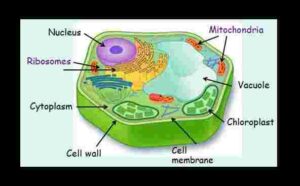
Questions 14. Drawn labelled diagram to show cell structure in animals.
Answer :
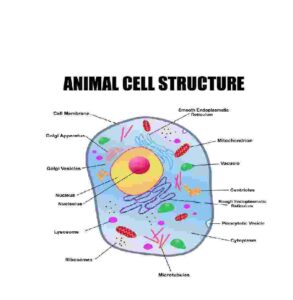
Questions 15. The following diagrams represent cells from cheek lining and a plant:
Label the parts against the indicated alphabets/numbers :
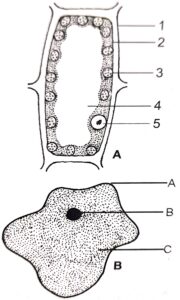
Answer :
Part A: 1.Cell wall, 2. Cell Membrane 3.Platid 4.Vacuole 5Nucleus
Part B:- A. Cell Membrane, B. Nucleus, C. Cytoplasm
Questions 16. Observe the figure shown below and answer the following :
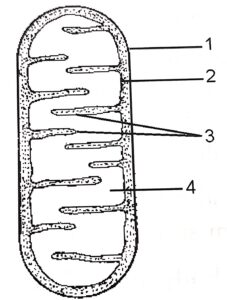
(i) What does this figure represent?
(ii) Mention the role performed by this structure in the cell.
(iii) Label the parts marked 1-4
Answer :
(i) mitochondrion
(ii) Energy Production
(iii) outer membrane, intermembrane space, inner membrane, cristae and matrix.
–: End of The Cell Goyal Brother Solutions ICSE Class-9 Biology :–
Return to:- ICSE Biology for Class 9 Goyal Brothers Prakashan solutions
thanks


